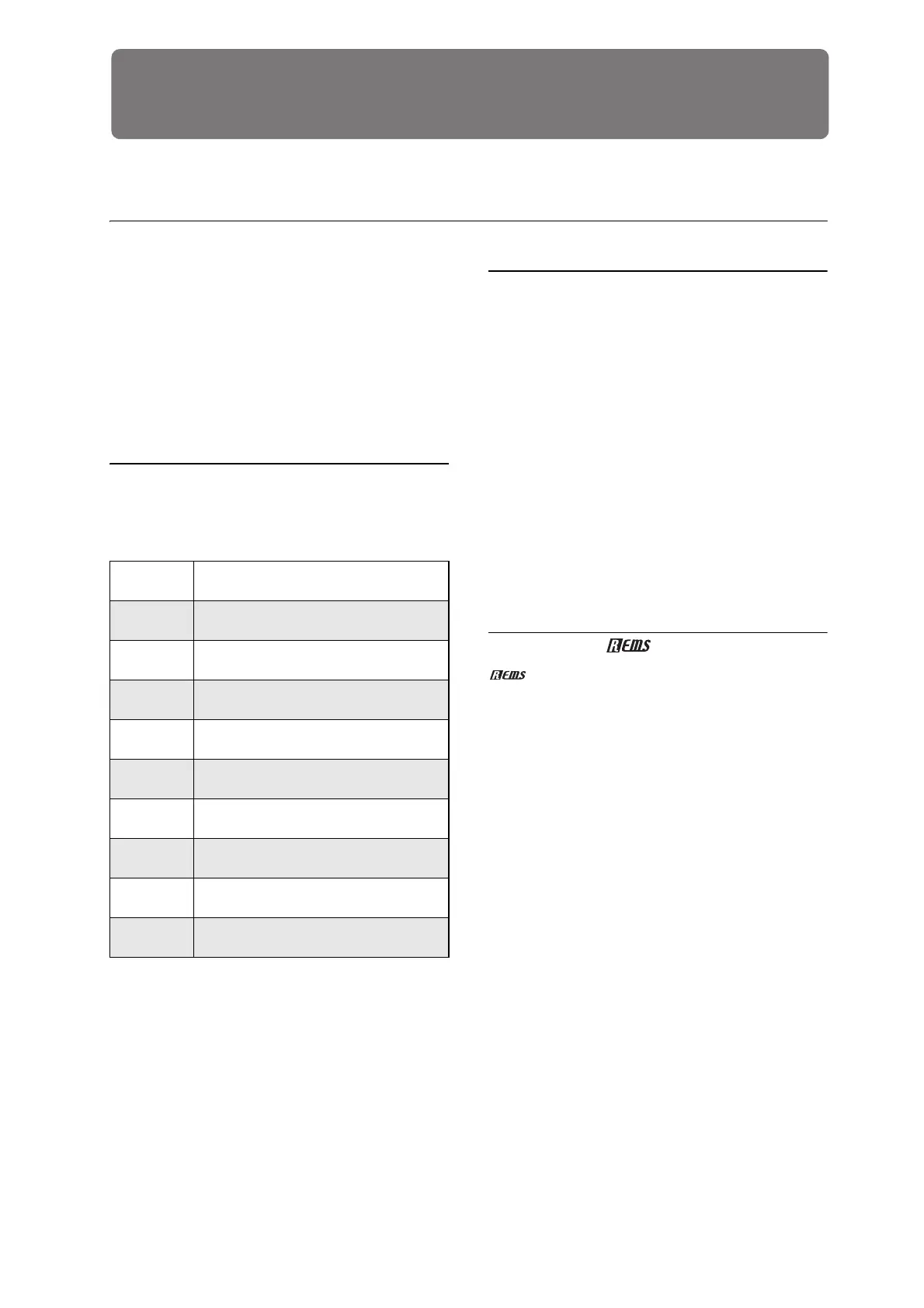219
Using Effects
Effects overview
Effects basics
The NAUTILUS provides 12 insert effects, two master
effects, and two total effects, together with a mixer that
controls the routing of these effects. All of these are stereo
in/out.
Specific parameters of these effects can also be controlled in
real time from the NAUTILUS’ controllers or via MIDI
messages using Dynamic Modulation (Dmod), by
MIDI/Tempo Sync, or by using a common LFO or the X-Y
Envelope to apply synchronized change to differing
modulation effects.
Effect types
You can choose from 197 different effects in the following
categories:
Effect types
Maximum number of effects and
maximum voice polyphony
For each effect IFX1–12, MFX 1 and 2, and TFX 1 and 2,
you are free to choose and use any of 197 types of effect.
There is no limitation on the maximum number or type of
effects you can use. During Smooth Sound Transitions, the
NAUTILUS may use up to 34 effects at once (including the
Set List EQ).
However, a certain amount of digital processing capability
must be used in order to produce each effect. The
Performance Meters page shows the amount of processing
power currently being used. You can find this on the
Performance Meter tab of Home in PROGRAM, and
COMBINATION modes.
Please note that power used by the effects may sometimes
have an impact on the available number of voices (although
generally only in extreme conditions). For more information,
see “About polyphony” on page 13.
What is REMs * ?
(
R
esonant structure and
E
lectronic circuit
M
odeling
S
ystem) is Korg’s proprietary technology for digitally
recreating the numerous factors that produce and influence a
sound, ranging from the sound-production mechanisms of
acoustic instruments and electric/electronic musical
instruments, to the resonances of an instrument body or
speaker cabinet, the sound field in which the instrument is
played, the propagation route of the sound, the electrical and
acoustic response of mics and speakers, and the changes
produced by vacuum tubes and transistors.
Dynamics:
000…010
Effects which control volume, such as
compressors, limiter, and gates
EQ/Filter:
011…026
Effects which control frequency content, such
as EQ, multi-mode filter, exciter, and wah
OD/Amp/Mic:
027…039
Overdrive and amp modeling effects such as
guitar/bass amps and mic preamps
Cho/Fln/Phs:
040…054
Choruses, Flangers, Phasers, and other pitch
and phase modulation effects
Mod/P.Shift:
055…076
Other modulation effects such as tremolo and
rotary speaker, and pitch shifters
Delay:
077…099
Delays
Reverb/ER:
100…108
Reverb and early reflections
Mono-Mono:
109…140
Chains of two mono effects in series
Mono/Mono:
141…185
Dual Mono parallel effects, with independent
mono effects for the left and right inputs
Vintage:
186…197
Collection of vintage effects from the EP-1 and
CX-3

